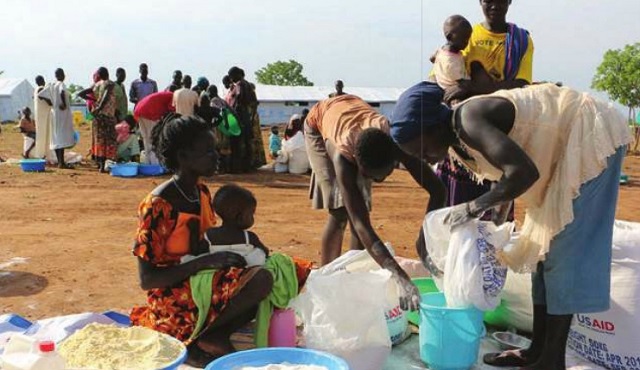
Kampala, Uganda | THE INDEPENDENT | Up to 3.5 million people in Karamoja and the cattle corridor areas of Nakaseke and Nakasongola districts are at the verge of starvation due to weather vagaries that have affected their harvest. The situation is equally dire in the areas of Teso, Bukedea, and some parts of the Busoga region.
The development follows severe dry conditions at the start of the 2019 March-May season, preceded by the harsh dry season of January-February 2019 and poor October-December 2018 spots of rain, which have impacted planting and germination of crops in several areas of the country.
Weather forecasts previously pointed to average to above-average March-May rains, but subsequent updates predicted dry conditions in April and mixed performance of rains in May. It is estimated that as a result, crop production will be below-average levels raising major food security concerns in areas that depend entirely on rainfall for crop production.
According to meteorologists, the suppressed rainfall between early March and mid-April was largely caused by the Tropical Cyclone Idai, which formed in early March in the Mozambique Channel and redirected precipitations away from East Africa.
The government spokesperson Ofwono Opondo says that the recurrent climatic shocks have undermined household resilience and as a result, urgent support is critically needed to support agricultural and pastoral livelihoods which are threatened by the already poor vegetation conditions.
He says that the cabinet has already approved 40 billion Shillings for emergency procurement of food.
In March, URN reported that in Nakasongola, the price of meat had drastically fallen in Nakasongola district as scores of cattle died due to lack of water and pasture. A kilogram of meat cost 1,000 Shillings, down from 10,000 Shillings, while a cow went for as low as 50,000 Shillings.
In its April Monetary Policy Report (MPR), Bank of Uganda said it expected the price of foodstuffs to go up because of drought that has ravaged villages.
Even when it rains amply, Ugandans’ food production capacity is low because they use archaic means like hand hoe. Government has previously pledged to transform the agriculture sector to one where farmers can irrigate their crops even when it is dry. This has not come to pass.
*****
URN
 The Independent Uganda: You get the Truth we Pay the Price
The Independent Uganda: You get the Truth we Pay the Price



